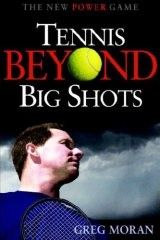May 1998 Article
Mortal Tennis/Circle Game Archive
Tennis Server
|

 |
As a tennis player, you are well aware of the importance of footwork. You may have the most technically proficient strokes at the club but if you can't get to the ball your beautiful strokes are like a racket without strings---useless! This is not new information and, if we are at all serious about improving our game, we spend a great deal of time working on our movement. We climb up on the stairmaster, run sprints and jump rope with the hope of gaining that slight bit of quickness which will enable us to arrive at the ball a split second earlier. While we all understand the importance of footwork, few of us take the time to consider how our feet feel about the strain and pain we put them through. Well, our feet are speaking out and they are not at all happy! The National Center for Health Statistics reports that approximately 59 million Americans have some type of foot problem and a "substantial number of these injuries belong to individuals who engage in movement oriented activities such as tennis," says Dr. Alan Rosenthal, a Sports Medicine Podiatrist in Ridgefield, CT. "Tennis is a very stressful sport, particularly to the legs and feet," says Dr. Rosenthal. "With 26 bones in each foot, 33 joints, 38 muscles and ligaments and over 250,000 sweat glands, your two feet contain over 25 percent of the bones in your body." "Many of these bones are small, delicate and must endure the equivalent of several hundred tons of force every day which explains why they are more prone to injury than any other part of your body," says Dr. Rosenthal. With that in mind, players of all ages and levels should pay careful attention to the condition of their feet. Below are a few of the more common foot injuries and maladies along with Dr. Rosenthal's suggestions for quick relief.
BLISTERS: We've all had them and they can be debilitating. Dr. Rosenthal cautions, "Do not open the blister. Apply an artificial skin product such as "Toughskin" or "Newskin" or a band-aid and leave it alone until it falls off. If the blister does pop, wash the area and apply an antiseptic and bandage." HEEL SPURS: Your heel bone is the largest bone in the foot and bears your body weight with each step. If you experience pain in the heel when you first get out of bed in the morning or when playing, you may have a heel spur. Heel pain and spurs are often associated with Plantar Fascitis (my condition) which is a swelling of the long band of tissue which connects the heel with the ball of the foot. "Tennis players can combat heel spur syndrome by doing stretching exercises for the calf muscles before and after playing," says Dr. Rosenthal. "Also, try to play on softer surfaces and use anti-inflamatories. If the pain persists you may want to see a podiatrist who may prescribe heel cups or orthotics." SEVERS DISEASE: Usually afflicts active children, whose heel bone is not yet fully developed. Through the constant trauma of sports, the heel bone becomes aggravated and can cause the child a great deal of pain. Stretching, over-the counter heel cups often relieve the symptoms. Again, if the pain does not go away, see a podiatrist. POSTERIOR TIBIAL TENDINITIS: "As we age, our muscles tend to gradually lax and, as a result, we become more flat-footed," says Dr. Rosenthal. The posterior tibial is a muscle in the foot and will sometimes actually tear, causing our feet to become flat which can lead to a variety of problems.
When buying your tennis shoes consider the following: Buy your shoes late in the afternoon or after exercise when your feet are slightly swollen -- as they will be when you play tennis. Wear the socks that you will play in and make sure that the shoes fit snugly in the heel otherwise they will slip when you start to move. Fit the widest part of your foot into the widest part of the shoe. There should be a fingers width (about half an inch) of space between the end of your longest toe, not necessarily the big toe, and the end of the shoes toe box. You should be able to wiggle your toes. There should be adequate cushioning under both the heel and toe areas. Always try on both shoes, fully laced. Stand, walk and do whatever movements you will do on the court. They should feel comfortable because good shoes do not need a break-in period. Dr. Rosenthal concludes that "If you can learn to recognize and deal with potential injuries when they are in the beginning stages, you can save yourself a lot of pain, discomfort and also a potentially season-ending injury." Your feet can carry you to either success on the court or straight to the disabled list. Take care of them!!!!!!!
This column is copyrighted by Greg Moran, all rights reserved.
Greg Moran is the Head Professional at the Four Seasons Racquet Club in Wilton, Connecticut. He is a former ranked junior and college player and certified by both the USPTA and USPTR. Greg has written on a wide variety of tennis-related subjects for numerous newspapers and tennis publications including Tennis, Tennis Match and Court Time magazines. He is also a member of the FILA and WILSON Advisory Staffs.
Questions and comments about these columns can be directed to Greg by using this form.
|



October 2022 Tennis Anyone: Patterns in Doubles by John Mills. September 2022 Tennis Anyone: Short Court by John Mills. |

 You will join 13,000 other subscribers in receiving news of updates to the Tennis Server along with monthly tennis tips from tennis pro Tom Veneziano.
You will join 13,000 other subscribers in receiving news of updates to the Tennis Server along with monthly tennis tips from tennis pro Tom Veneziano. 